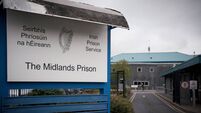Nurse deal to hit planned surgeries

An escalation policy will be triggered when the equivalent of 30% of the bays in an emergency department are occupied by admitted patients.
General secretary of the Irish Nurses and Midwives Organisation Liam Doran said it was not possible in many hospitals at present to do two streams of work.
Mr Doran said the agreement placed the emergency department ahead of the rest of the hospital but it was a temporary measure — extra beds were needed to deal with overcrowding.
“We can’t magic up extra beds; we have to make best use of existing bed capacity and that means that you have to respond to growing pressures earlier in the day. You have to curtail elective work earlier and more repeatedly,” he said.
Revised proposals were agreed last month in talks with health service management at the Workplace Relations Commission in an attempt to avert threatened strikes in emergency departments.
The deal, accepted by emergency department nurses by 71% to 29%, with a turnout of 75%, also provides for the establishment of a senior nurse position and two days’ annual leave in 2016 and 2017 for missed breaks.
Mr Doran said the dispute was never about pay and conditions — it was always about patient care, ensuring a safe working environment and minimising overcrowding: “Implementation of the proposals will require a sea change in how management approached emergency department overcrowding; it will require 24/7 senior management presence in all acute hospitals.”
Mr Doran said senior management would have to engage weekly at hospital and at group level with INMO emergency representatives and officials to ensure that the deal was implemented.
However, he said the ultimate solution to emergency department overcrowding was about 1,500 more acute beds; a minimum of 3,000 long-term care beds and more community care and community nursing services.
Mr Doran said many of the measures had begun to be implemented but, ultimately, they would have to try and ensure that staffing levels were appropriate to match patient need.
“That requires more recruitment by health service management and beyond that we have not lost sight at all that this will only be solved by additional bed capacity being brought on over the next two to three years,” he said.
Mr Doran said the agreement acknowledged that the INMO did not agree with full capacity protocol — putting additional beds on wards to deal with emergency department overcrowding.
He believed that an earlier response to overcrowding would mean that other work, elective surgery, would have to be curtailed because of the available bed capacity. The Workplace Relations Commission will review the implementation of the agreement in a month.
Health Minister, Leo Varadkar, welcomed the “decisive” yes vote by emergency department nurses and assured them of his commitment to seeing the agreement was fully implemented.
There were 332 patients on trolleys in emergency departments and on wards yesterday, according to the Inmo, compared to the HSE’s TrolleyGar which recorded 280 on trolleys, with 120 waiting more than nine hours at 8am.













